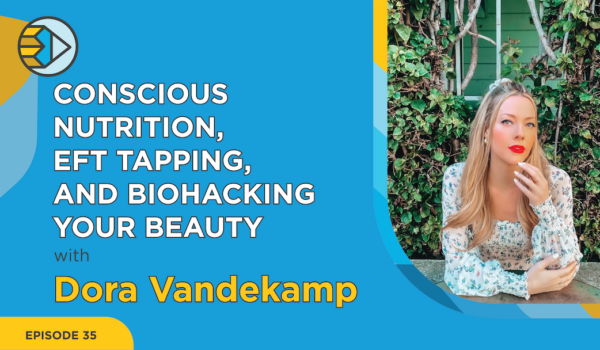
EP 55: How to Identify “Bad Science” in Research Articles
How do you distinguish valid research from “bad science?”
In the clickbait era, it’s more important than ever to be able to distinguish fact from fiction. Thanks to the internet, we have more access to research than ever before. Of course, the saying is “just Google it,” but not everything you find in a Google search is true. In academia, it is important to make sure that the articles you are accessing are not ‘bad’ science. Join Cath Anne on Episode 55 of the Homework Help Show, to learn how to read beyond the headline and how to spot bad science for yourself.
Looking for study tips, help with essay writing, or advice on how to be a better student? Welcome to The Homework Help Show, a weekly show where we teach, assist, and offer valuable insights for student life. From study hacks to writing tips, discussions about student mental health to step-by-step guides on academic writing and how to write a resume, we’ve got you covered. Want your questions answered? Write them below or join the conversation on social media using the hashtag #askHHG
TRANSCRIPT:
Cath Anne: [00:00:00] Hi there and welcome back to our channel. My name is Cath Anne and this is episode 55 of The Homework Help Show hosted by Homework Help Global. Here on this show we provide you with valuable content for your academic and student life. Let’s jump in.
Cath Anne: [00:00:17] OK guys we are constantly on the Internet these days the Internet is where you gain access to information and maybe even research articles. However because there is so much information out there you really have to be careful about where you get your information and whether it is valid research. It is important to recognize whether the research you are actually accessing or the research articles you are using are not bad science. Of course we all know the saying just Google it. However this does not always stand up in the academic world. Today on the show we hope to provide you with some tips so that you can recognize when there is bad science in a research article, and this way you can avoid incorporating these types of articles into your research essay. Next week we will look into how to use google to enhance your research and provide you with some valid research articles to incorporate into your academic essays. However this week let’s focus on bad science and how to avoid those kinds of research articles.
Cath Anne: [00:01:37] First I’d like to note that many of these tips came from the blog article written by the Web site Big Think we will link the website and the attached PDF in the description box below so check that out if you’re looking for a PDF to print off and put on your wall. OK now let’s get into the tips.
Cath Anne: [00:01:57] Number one when you look at a research article or when you’re doing research. Make sure to be aware of exaggerated headlines or click bait. First check the title of the research article. In the age of clickbait or in other words the age where we want people to click on our information, there is a tendency to exaggerate headlines or titles to make people drawn to towards the article. There is also a tendency to exaggerate or sensationalize the information within the article in order to appeal to people and draw them into clicking on it. If the title is sensationalized or exaggerated this is a pretty clear indication that it is not valid research and that you can pass on it and find something more reputable.
Cath Anne: [00:02:45] Number two, media misrepresentation. When you are doing your research you may come across media articles that discuss research. However the media also tends to exaggerate information or findings within a study. If you’re hoping to use a research article and you find it in the media go back to the original article and that way you will get the most accurate information and you’ll be able to cite the research article directly.
Cath Anne: [00:03:13] Number three conflicts of interest. Sometimes large companies or corporations hire scientists to conduct research for them in order to sell a product. Now this does not mean that the research is not valid. However you want to be aware that there could be a conflict of interest or it that results could be skewed simply because the scientist is being paid. Be aware of these types of conflicts when you are doing your research because this could skew the data and result in bad science.
Cath Anne: [00:03:42] Number four, abstract language. Sometimes research reports will use abstract language or make speculations. For example a study may use words like may or could possibly stay alert and aware of these types of words. This may indicate that a study is only looking at a certain portion of the information and not providing the full picture. It also indicates that the research may not provide definite answers to a research question which could result in bad science and you may not want to use this in your research essay.
[00:04:19] Number five, a small sample size. Now there are cases where studies will require a smaller sample size. How over the small sample size the more limited the research in a case where a study uses a small sample size but a larger sample size could have been possible. You may want to be wary. You’re also going to want to be aware of whether a study indicates that a small sample size it was a limitation in the research check for this information in the discussion section of the report or also in the limitation section. A valid researcher will make note of any limitations that come through in the research.
Cath Anne: [00:05:02] Number six samples that do not represent the population valid research will select a population or a sample that is representative of the population as a whole. If the research does not select a representative population the research is then not reflect five of the population as a whole.
Cath Anne: [00:05:25] Number seven, there is no control group. In order to contrast research findings with a baseline a study must have a control group. The term control group is referred to the group of people that is given a placebo or not given a treatment in a clinical study. In order for their results to be evaluated the treatment group must be contrasted with a control group. So when you are looking for a valid research study especially if it is a clinical study check to see whether they have indicated a control group or not.
Cath Anne: [00:06:00] Number eight, a lack of a blind test in order to avoid skewing the results. People in the control group should not be aware that they are in the control group. This is called blind testing if there is no indication of blind testing in the essay or the research article you may want to be wary of the results. Look into the study a little bit more. Blind testing is not always ethical and not always feasible. So there may be some wiggle room in this area.
Cath Anne: [00:06:30] Number nine, drawing conclusions based on limited data sometimes research studies will cherry pick information and draw conclusions based on that information alone. This means when it comes to the analysis or discussion portion of the research article The research articles will focus on specific results at law alone without looking at the bigger picture and all of the results. When only a few of the results are mentioned in order to prove a hypothesis this indicates faulty research.
Cath Anne: [00:07:02] Number 10, results cannot be reproduced. In any case during a study results should always be able to be reproduced a study should be able to be reproduced within a different context. If the study cannot be replicated this indicates a case of bad science.
Cath Anne: [00:07:20] Finally number 11, peer review. Valid research goes through a process called peer review in which it is reviewed by other scholars and professors in the field for validity and whether it can be reproduced in order to qualify for admission into a journal. A study must go through a peer review process. Keep in mind that even when an article is cited numerous times in the mainstream that does not make it necessarily reputable. Check the content of the article and determine whether it has been peer reviewed and this will be your best indication that it is valid research.
[00:08:06] Well guys that’s it for me this week. I hope that this was effective and helpful for you and I hope I’ve given you a few tips around how to identify bad science and avoid it including those in your research. As always if you have any comments questions or anything to say junk into the comments section below. We always love to hear from you. You can also get us on social media. All of our info links enlisted in the description below and we’ve also included a link to see where you can access more information on how to identify. As. Always if you liked this video and found it helpful. Please give it a light. And. Subscribe to our channel so you don’t miss out on any of our other activities. Thank you guys so much for joining me and I hope you’ll join us. Good luck on reading all your essays. Talk soon and take care.
Share:

